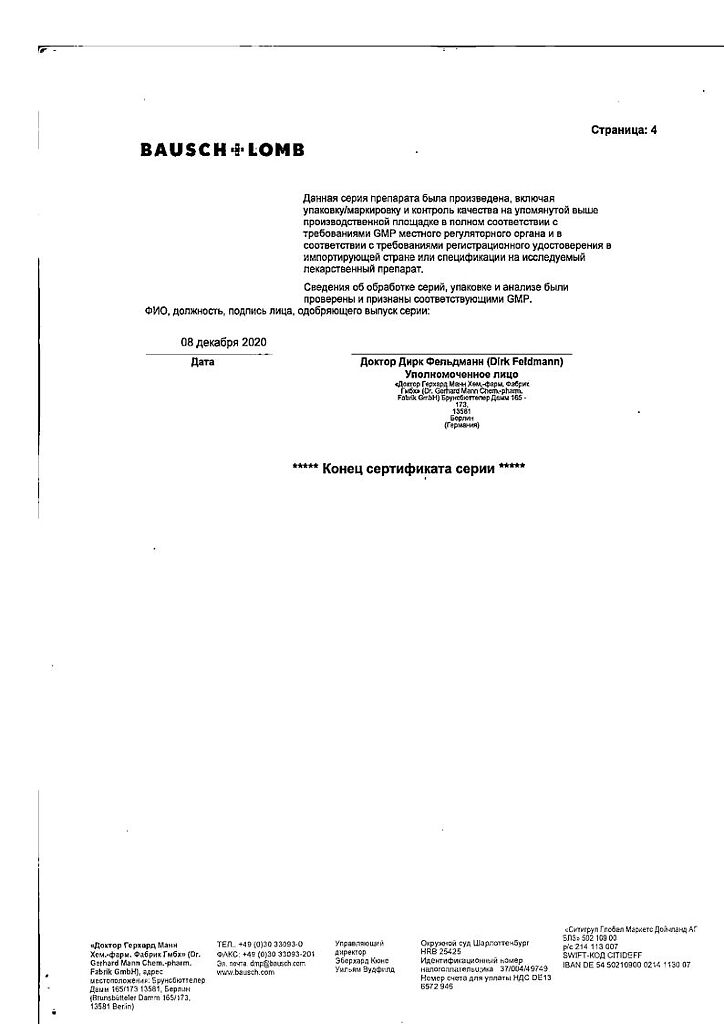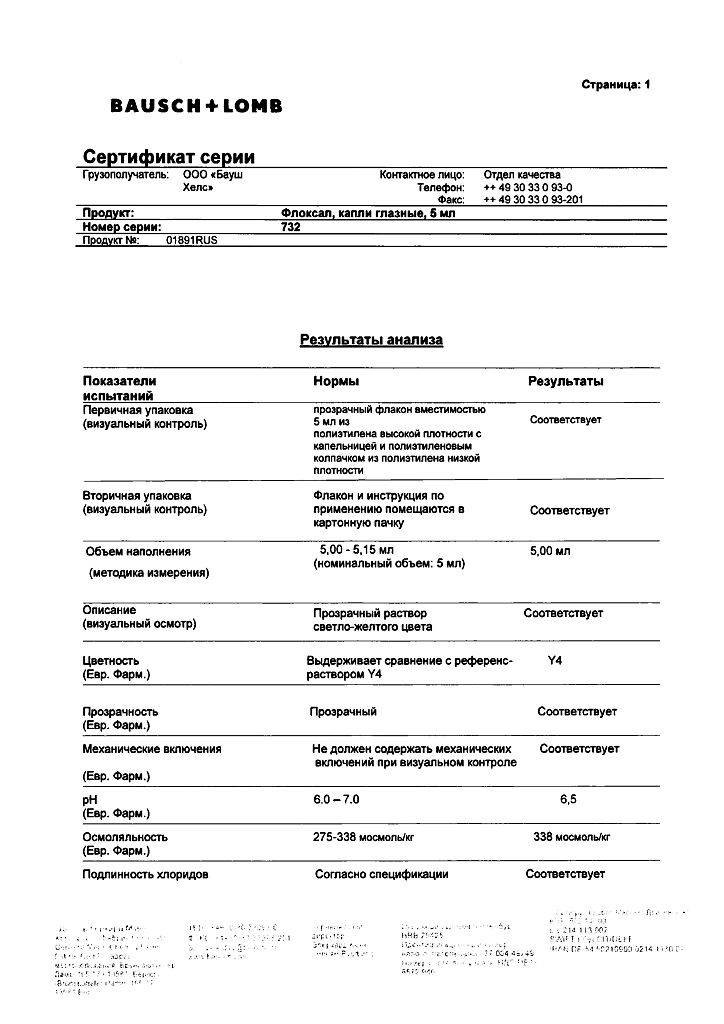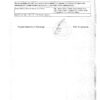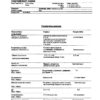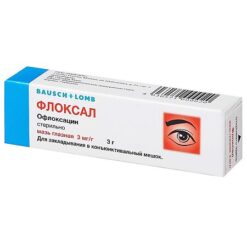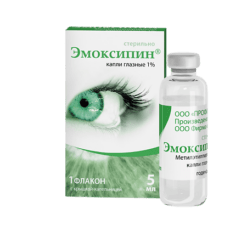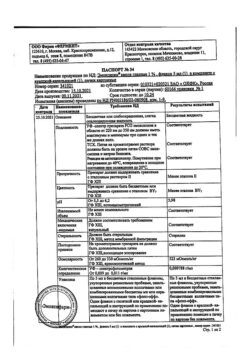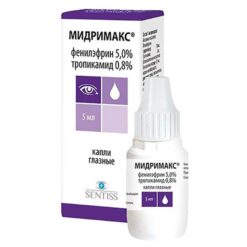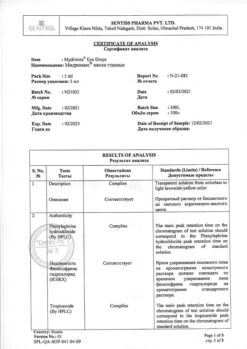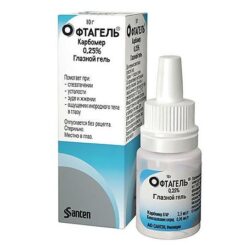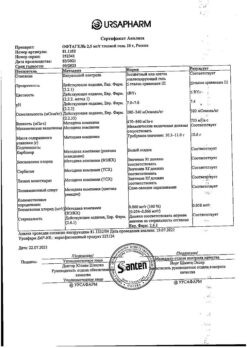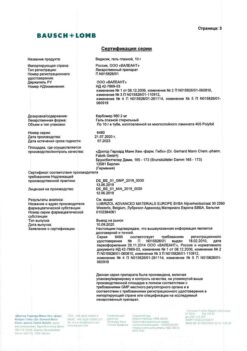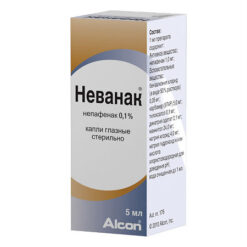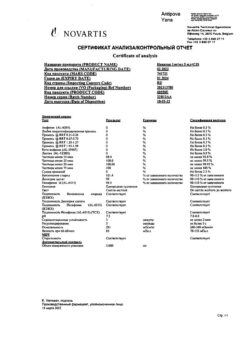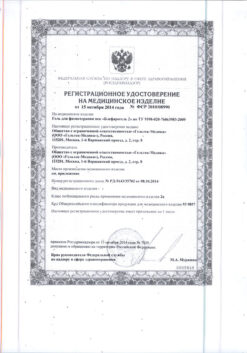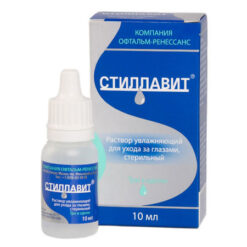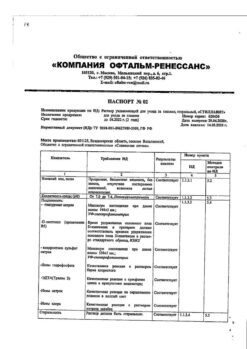No products in the cart.
Floxal, eye drops 3 mg/ml 5 ml
€6.55 €5.82
Description
Pharmgroup:
The antimicrobial agent is a fluoroquinolone.
Pharmic action:
Floxal is an antimicrobial drug of broad spectrum of fluoroquinolones group for local use in ophthalmology. Bactericidal action of Ofloxacin is associated with blockade of DNA-gyrase enzyme in bacterial cells.
Highly active against most gram-negative microorganisms: Esherichia coli, Salmonella spp, Proteus spp, Morganella morganii, Shigella spp, Klebsiella spp., Enterobacter spp., Serratia spp., Citrobacter spp., Yersinia spp., Providencia spp., Haemophilus influenzae, Neisseria gonorrhoeae, Neisseria meningitidis, Mycoplasma spp., Legionella pneumophila, Acinetobacter spp., Chlamydia spp.
Active against some Gram-positive microorganisms, in particular Staphylococcus spp., Streptococcus spp.
Moderately sensitive to Ofloxacin Enterococcus faecalis, Streptococcus pneumoniae, Pseudomonas spp.
Microorganisms producing β-lactamase are sensitive to Ofloxacin.
Anaerobic bacteria (except Bacteroides urealyticus) are insensitive to the drug.
Indications
Indications
Infectious and inflammatory diseases of the anterior part of the eye caused by microorganisms sensitive to ofloxacin:
blepharitis;
barley;
conjunctivitis;
dacryocystitis;
keratitis and corneal ulcer;
chlamydial eye infection;
prevention and treatment of bacterial infections after eye injuries and surgical interventions.
Pharmacological effect
Pharmacological effect
A quinolinic acid derivative, ofloxacin, is a gyrase inhibitor with a bactericidal effect.
Minimum inhibitory concentration limits
In the resistance study mentioned below, ofloxacin was assessed using commonly used dilution series. The following minimum inhibitory concentrations have been established for susceptible and resistant microorganisms.
EUCAST (European Committee on Antimicrobial Susceptibility Testing) Minimum Inhibitory Concentration Limits
Pathogen Sensitive Resistant
Enterobacteriaceae ≤0.5 mg/l >1 mg/l
Staphylococcus spp. ≤1 mg/l >1 mg/l
Streptococcus pneumoniae ≤0.125 mg/l >4 mg/l
Haemophilus influenzae ≤0.5 mg/l >0.5 mg/l
Moraxella catarrhalis ≤0.5 mg/l >0.5 mg/l
Neisseria gonorrhoeae ≤0.12 mg/l >0.25 mg/l
non-species specific minimum inhibitory concentration limits* ≤0.5 mg/l >1 mg/l
*Based primarily on serum pharmacokinetics.
Antibacterial spectrum
The spectrum of antibacterial action of ofloxacin includes obligate anaerobes, facultative anaerobes, anaerobes and other microorganisms, such as chlamydia. The prevalence of acquired resistance may vary geographically and over time among individual species, so local information on resistance is desirable, especially when treating severe infections. If the local prevalence of resistant microorganisms is such that the effectiveness of ofloxacin is questionable, specialist advice should be sought if necessary. Especially in the case of severe infections or lack of microbiological effectiveness, diagnostics should be carried out to identify the pathological microorganism. Cross-resistance of ofloxacin with other fluoroquinolones is likely.
The resistance data presented in the following table are based primarily on current results of a study of the prevalence of resistance among 1391 bacterial isolates isolated from patients with ocular infections (mainly in smears) at 31 clinical centers in Germany. Data are based on the minimum inhibitory concentration limits for systemic use mentioned above. When ofloxacin is applied topically to the eyes, in the anterior chamber of the eye, higher concentrations are usually achieved than with systemic administration. Thus, clinical efficacy for approved indications may also be achieved against agents such as B. Enterococcus spp., which have been determined to be resistant in vitro.
Generally susceptible species
Aerobic gram-positive microorganisms: Bacillus spp., Staphylococcus aureus (methicillin-sensitive).
Aerobic gram-negative microorganisms: Acinetobacter baumannii, Acinetobacter Iwoffi, Enterobacter cloacae, Escherichia coli, Haemophilus influenzae, Haemophilus parainfluenzae, Klebsiella oxytoca, Klebsiella pneumoniae, Moraxella catarrhalis, Proteus mirabilis, Serratia marcescens.
Species for which acquired resistance may be a problem during treatment
Aerobic gram-positive microorganisms: Corynebacterium spp., Enterococcus faecalis, Staphylococcus aureus (methicillin-sensitive)+, Staphylococcus epidermidis$, Streptococcus pneumoniae$, Streptococcaceae (except Streptococcus pneumoniae)$.
Aerobic gram-negative microorganisms: Pseudomonas aeruginosa, Stenotrophomonas maltophilia.
Species with natural resistance
Aerobic gram-positive microorganisms: Enterococcus spp.
$ The natural susceptibility of most bacterial isolates to this antibiotic is believed to be intermediate. However, concentrations of at least 4 mg/l are observed in the tear film within 4 hours after a single application, which reliably destroys 100% of isolates.
+In at least one area the resistance level is more than 50%.
Special instructions
Special instructions
Patients with hypersensitivity to other quinolone antibacterial agents should use eye drops with caution. If an allergic reaction to ofloxacin occurs, you should stop using the drug.
When using ophthalmic drugs containing ofloxacin, the risk of nasopharyngeal passage, which may contribute to the emergence and spread of resistant strains of microorganisms, should be taken into account. As with other antibacterial agents, prolonged use may result in overgrowth of non-susceptible organisms.
If there is no improvement during therapy or an exacerbation of the disease occurs, the drug should be stopped and alternative treatment should be started
When treating patients with corneal epithelial defects or corneal ulcers, caution must be exercised due to the risk of corneal perforation, especially in elderly patients and with concomitant diseases (dry eye syndrome, rheumatoid arthritis), as well as when using NSAIDs simultaneously.
Tendon inflammation and rupture may occur during systemic fluoroquinolone therapy, including ofloxacin, especially in elderly patients and patients concomitantly taking corticosteroids. In these cases, you must be careful and stop taking the drug at the first sign of inflammation of the tendons.
During therapy with ofloxacin, avoid excessive exposure to sunlight or UV radiation (eg, sun lamps, tanning beds, etc.) due to the potential for photosensitivity.
It is not recommended to wear contact lenses while using the drug.
This eye drop product contains the preservative benzalkonium chloride, which may cause eye irritation (especially in patients with dry eyes or corneal diseases), be absorbed by soft contact lenses, causing discoloration, and have adverse effects on ocular tissue. Contact lenses should be removed before using the drug and, if necessary, reinserted no earlier than 15 minutes after instillation.
In case of long-term therapy, patients should be monitored due to possible eye irritation caused by benzalkonium chloride.
There are no reported differences in side effects in children compared to adults, but children’s eyes are more sensitive to irritation, which may affect adherence to therapy.
Impact on the ability to drive vehicles and machinery
No studies have been conducted on the effect on the ability to drive vehicles and operate machinery.
When instilling eye drops, temporary blurred vision is possible, so you should not drive vehicles or machinery until your vision is clear.
When using eye ointment, temporary blurred vision is possible, which lasts only a few minutes, so you should not drive vehicles or machinery until your vision is clear.
Active ingredient
Active ingredient
Ofloxacin
Composition
Composition
1 ml drops contains ofloxacin 3 mg,
excipients:
benzalkonium chloride – 0.025 mg;
sodium chloride – 9 mg;
1M hydrochloric acid solution – 4.5-5.5 mg;
1M sodium hydroxide solution – 2.5-3.5 mg;
water for injection – up to 1 ml.
Pregnancy
Pregnancy
Pregnancy
Clinical studies of ofloxacin have not been conducted in pregnant women. Systemic fluoroquinolones have been shown to cause arthropathy in immature animals. Use during pregnancy is contraindicated.
Breastfeeding period
There is evidence that ofloxacin and other fluoroquinolones taken systemically are excreted in breast milk, therefore use during breastfeeding is contraindicated.
Contraindications
Contraindications
Hypersensitivity to ofloxacin (or any other component included in the drug);
Children under 1 year of age (efficacy and safety have not been established);
Period of pregnancy and breastfeeding.
Side Effects
Side Effects
Serious reactions following use of systemic ofloxacin are rare and most symptoms are reversible. Since a small amount of ofloxacin is absorbed systemically after topical application, side effects that have been reported with systemic use may occur.
The incidence of adverse reactions is classified according to WHO recommendations: very common (≥1/10), common (≥1/100 and <1/10), sometimes (≥1/1000 and <1/100), rare (≥1/10000 and <1/1000), very rare (<1/10000), unknown (frequency cannot be estimated from available data).
From the immune system: very rarely – hypersensitivity reaction (including angioedema, shortness of breath, anaphylactic reactions, anaphylactic shock, swelling of the larynx and swelling of the tongue).
From the nervous system: unknown – dizziness.
On the part of the organ of vision: often – eye irritation, discomfort in the eyes; rarely – corneal precipitates, especially if there is a history of corneal diseases; unknown – keratitis; conjunctivitis; blurred vision; photophobia; swelling of the eyes; sensation of a foreign body in the eyes; increased lacrimation; dry eyes; eye pain; ocular hyperemia; hypersensitivity (including itching of the eyes and eyelids), periorbital edema (including swelling of the eyelids). Hypersensitivity reactions such as redness of the conjunctiva and/or mild burning in the eye are possible after treatment; however, these symptoms are short-term.
From the gastrointestinal tract: unknown – nausea.
From the musculoskeletal system and connective tissue: unknown – periorbital edema, facial edema, Stevens-Johnson syndrome, toxic epidermal necrolysis.
Inflammation and tendon rupture have been reported during systemic fluoroquinolone therapy, especially in elderly patients and patients concomitantly taking corticosteroids.
Interaction
Interaction
Systemic use of some fluoroquinolones has been found to inhibit the metabolic clearance of caffeine and theophylline.
Drug-drug interaction studies conducted with systemic ofloxacin showed that ofloxacin did not significantly affect the metabolic clearance of caffeine and theophylline.
Although there have been reports of an increased incidence of CNS toxicity with systemic use of fluoroquinolones when used concomitantly with systemic NSAIDs, there have been no reports of such cases with concomitant use of systemic NSAIDs and ofloxacin.
Overdose
Overdose
Not a single case of overdose has been reported.
In case of local overdose, rinse the eye with water.
Storage conditions
Storage conditions
In a place protected from light, at a temperature not exceeding 25°C.
Shelf life
Shelf life
Shelf life – 3 years. Do not use the drug after the expiration date indicated on the package.
After opening the bottle or tube, the drug should be used within 6 weeks.
Manufacturer
Manufacturer
Dr. Gerhard Mann, Germany
Additional information
| Conditions of storage | In a place protected from light, at a temperature not exceeding 25°C. |
|---|---|
| Manufacturer | Dr. Gerhard Mann, Germany |
| Medication form | eye drops |
| Brand | Dr. Gerhard Mann |
Other forms…
Related products
Buy Floxal, eye drops 3 mg/ml 5 ml with delivery to USA, UK, Europe and over 120 other countries.



